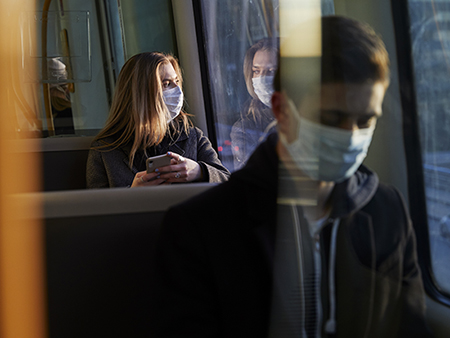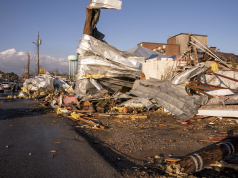By Savannah Koplon
UAB News
Across the world, public transportation provides a critical daily service to millions of people, conveniently taking them where they need to go. In many major cities and for a large majority of people, a sole reliance on the local bus, train or subway system, without another option to get to work or home, is in effect.
With a high volume of people accessing public transit and congregating during peak times, the fear of exposure to a virus like COVID-19 is a true reality. However, David O. Freedman, M.D., professor emeritus of infectious diseases at the University of Alabama at Birmingham, shares tips for traveling in the safest manner possible for you and the health of other riders as well.
“First and foremost, wearing a mask at all times is a critical way to protect yourself and others. With proper wear, it blocks droplets from your sneezes or coughs and minimizes opportunities for you to touch your face and either spread or come into contact with the virus from other people. Eating requires removing the mask in a high-risk situation, so change habits and eat and drink before or after the ride. It benefits others just as much as it helps you stay healthy,” Freedman explained.
Trains or buses may be crowded, so it is key to practice social distancing to the greatest extent, sitting or standing away from others, if possible. This includes staying at least six feet from others when entering and exiting the ride, at ticket stations, and in other high-traffic areas riders may find themselves in during the journey.
Since riders will either sit or hold a railing, Freedman suggests carrying sanitizing wipes to sterilize any seat or handle they may touch. He also suggests trying to stay in one place throughout the ride to minimize the amount of contact with others.
“Carrying hand sanitizer when traveling to clean your hands right before and right after the ride, will keep you safe and provide peace of mind during your commute,” Freedman said.
If possible, Freedman suggests modifying typical routes to take a less crowded way that may avoid hotspot areas in a city, although this may not always be an option. Another recommendation is to try to travel during off-peak times.
In some cities, contactless payment is an option, and one that would be worth utilizing as a way to lessen the number of times cash is handled or using a credit card in a shared machine. Should a credit card be used, Freedman cautions to sanitize after use before returning to a wallet or purse.





